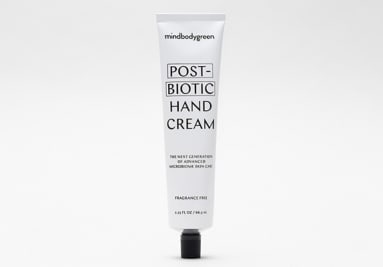Here’s the 101 on the skin microbiome and how to care for yours. The skin microbiome changes depending on the “eco-niche3,” or location. The critters also vary depending on the amount of light and whether the area is moist, dry, hairy, or oily. And the microbiome differs with age and gender. For instance, a hormonal, sweaty teenage boy sports a very different microbiome than a sedentary, postmenopausal woman. Ditto for the skin microbiome. Use of antimicrobial hand sanitizers and soaps are important for hygiene and protecting us against sickness—but it does contribute to skin dysbiosis and antibiotic resistance, thus stoking various skin conditions7, research shows. An imbalanced microbiome, or skin dysbiosis, is associated with many health conditions, including psoriasis, allergies, eczema, contact dermatitis, acne, poor wound healing, skin ulcers, dandruff, yeast and fungal infections, rosacea, and accelerated skin aging. It’s compromised by way of two factors: what you put on our skin, and what you put in your body. Also interesting: A recent study showed that kids who hand-wash dishes have a lower incidence of allergies compared to those in families that use a dishwasher. That sounds paradoxical given what I’ve just mentioned about soap, but the authors speculate this has to do with the benefits of skin exposure to the microbes on the dirty plates. In fact, research finds that contact with nature—or the lack of contact—directly influences your microflora diversity. “In industrialized countries, non-communicable diseases have been increasing in prevalence since the middle of the 20th century,” the study elaborates. “While the causal mechanisms remain poorly understood, increased population density, pollution, sedentary behavior, smoking, changes in diet, and limited outdoor exposure have all been proposed as significant contributors.” The study went on to show that exposing yourself to greenery—be it the rugged outdoors or even urban green landscapes—improves the diversity of your microflora9 in a beneficial way. And what’s happening is actually simple: The microbes found in nature literally transfer to your skin (and nasal) biomes through the simple act of touch and breathing. (While this is exciting to understand how closely human and earth biomes can be connected—the researchers couldn’t draw any conclusions on long-term benefits of this exposure yet, and noted more research should be done in this area so we can better understand how to improve our skin microbiomes.) She runs a Functional Medicine Clinic Immersion program for professionals and hosts the podcast New Frontiers in Functional Medicine. Fitzgerald is also actively engaged in clinical research on the DNA methylome using a diet and lifestyle intervention developed in her practice. Her first study was published in the journal Aging. She has published a consumer book, Younger You, and an application-based program, 3YY, based on the study. She lives with her daughter in Connecticut.



